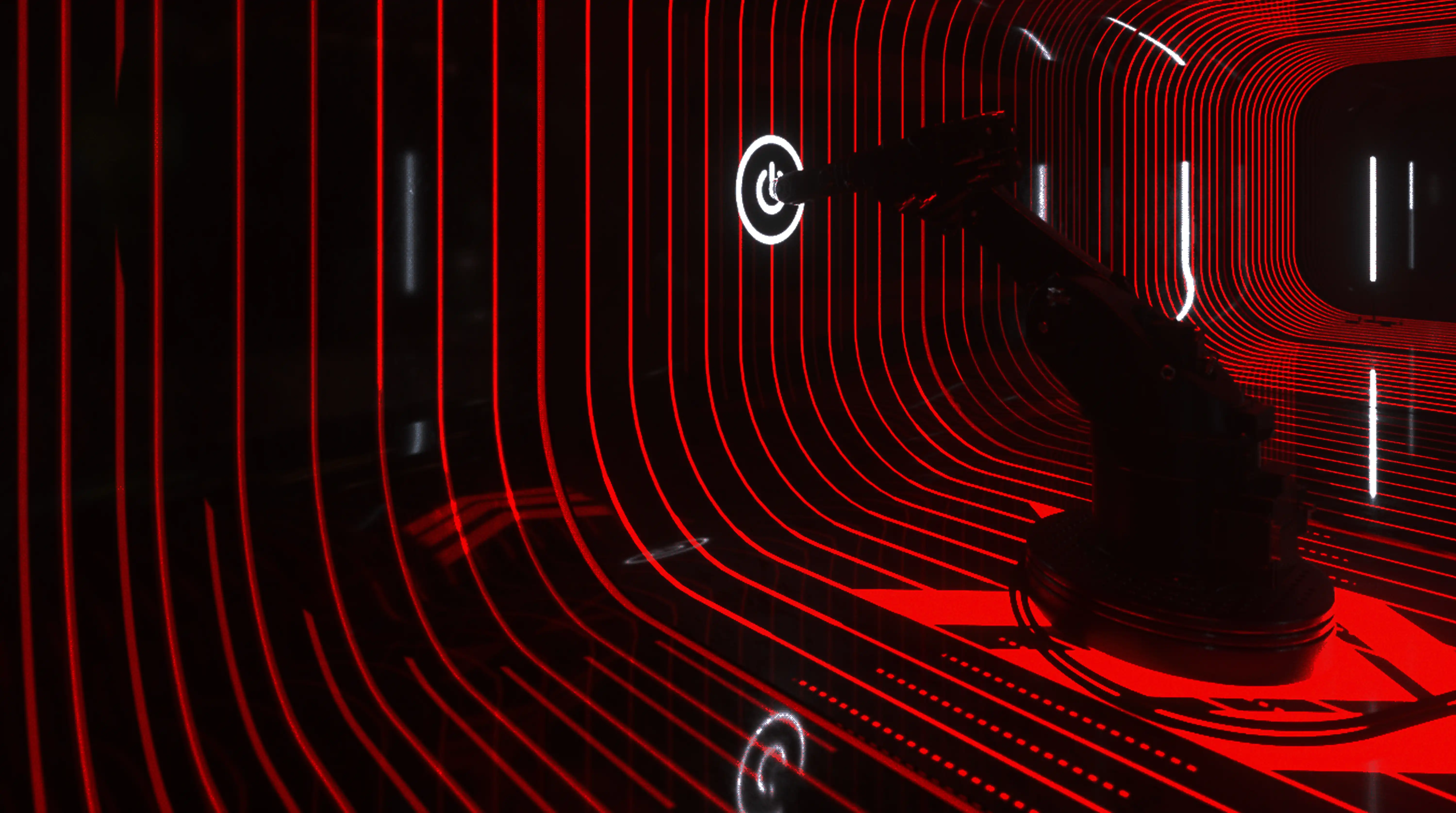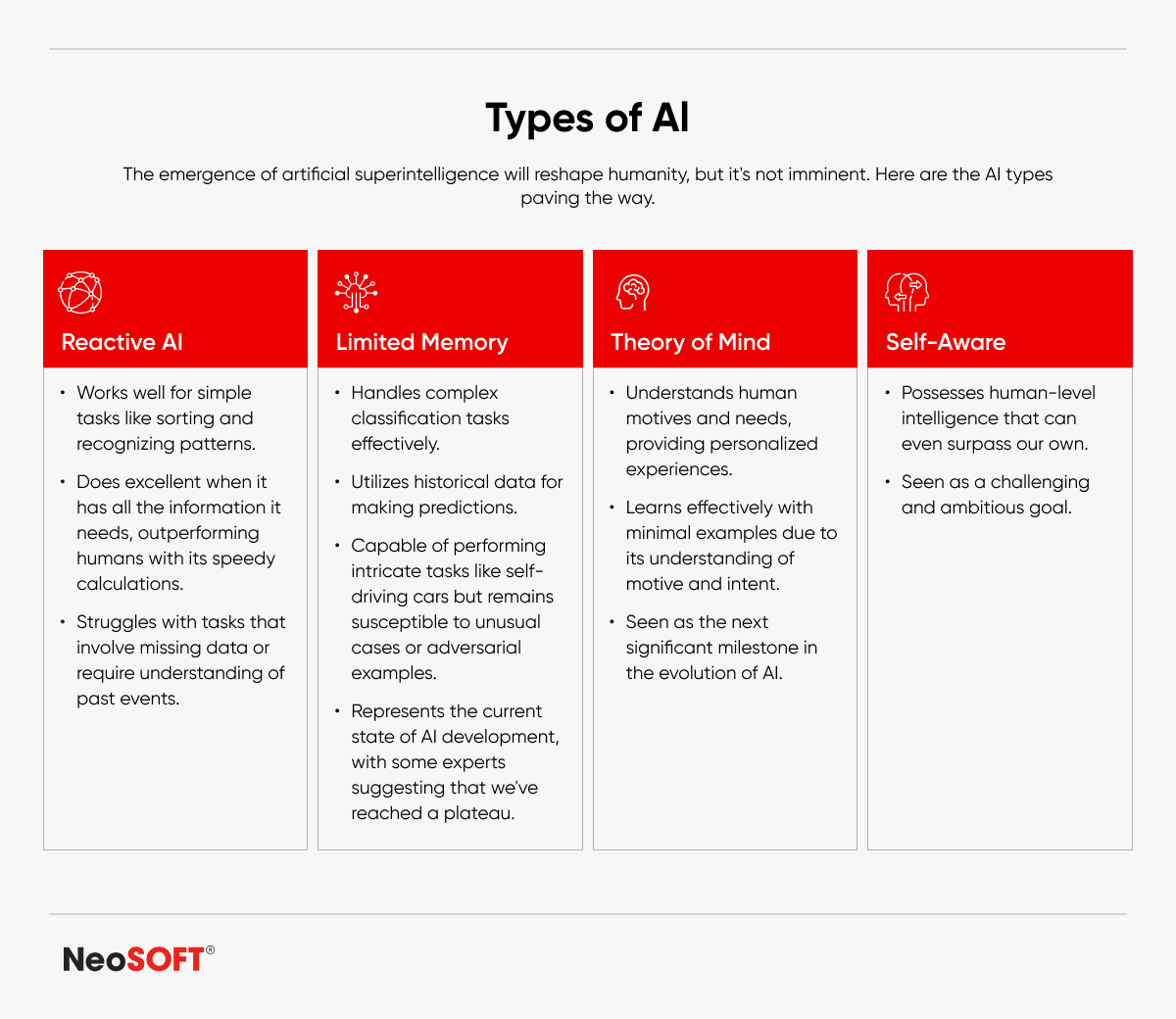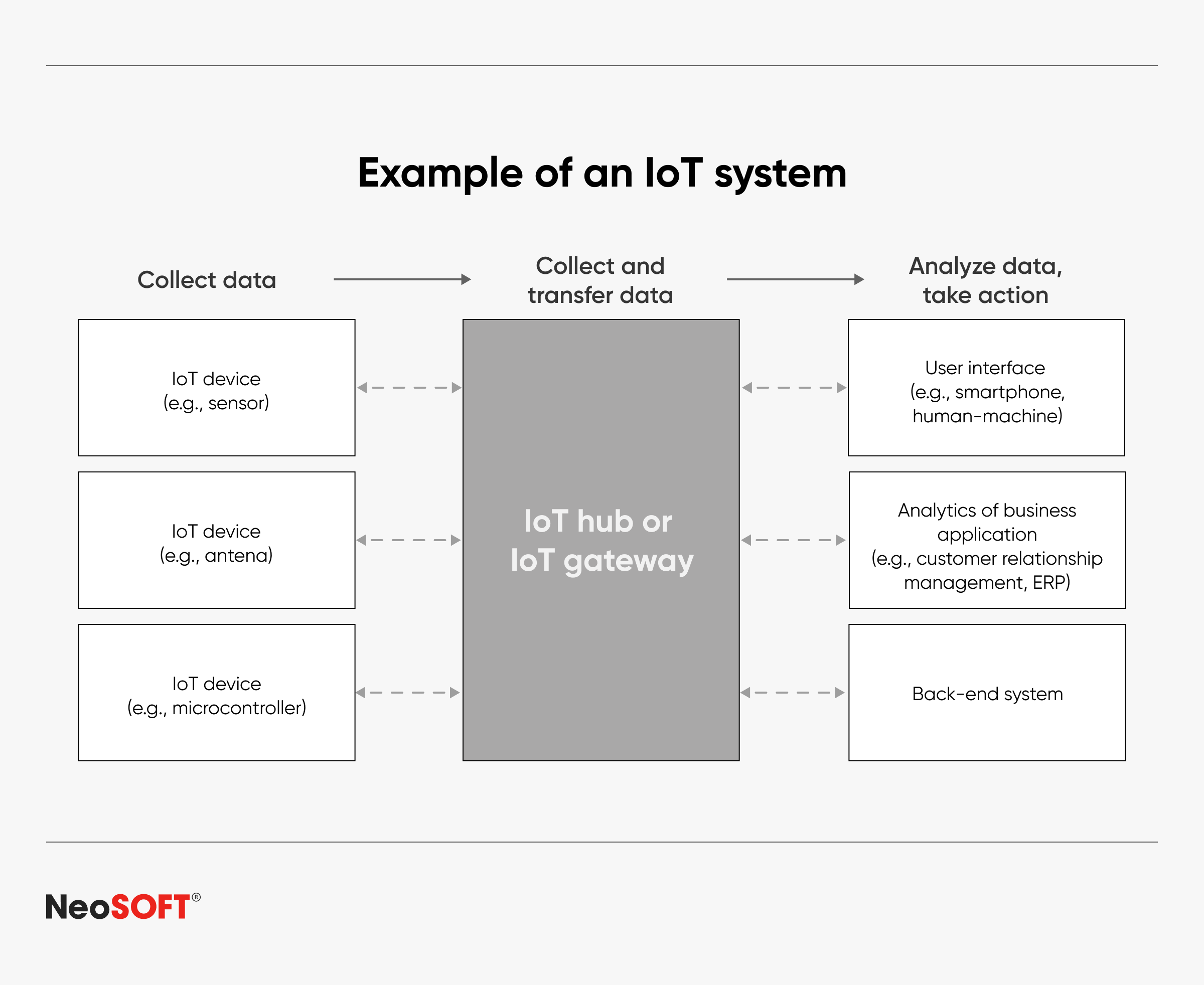The Interplay of AI and IoT to Build Intelligent and Connected Systems
AI is a type of computer science that is razor focused on developing intelligent systems capable of replicating human-like cognitive skills such as learning, reasoning, and problem-solving. It covers a broad spectrum of methodologies, incorporating elements such as computer vision, natural language processing, and machine learning. Conversely, the Internet of Things (IoT) pertains to an extensive network of physical objects integrated with sensors, software, and connectivity, facilitating the gathering and sharing of data across the internet. These interconnected devices range from everyday things like smart home appliances to complex industrial machinery and healthcare wearables.
AI and IoT have already demonstrated their transformative potential individually, reshaping industries and enhancing various aspects of our lives. However, the true power lies in their convergence. By integrating AI with IoT, organizations can create intelligent and connected systems that collect, analyze, and act upon real-time data. This combination unlocks a new realm of possibilities, empowering businesses to make data-driven decisions, automate processes, and deliver personalized experiences. From optimizing supply chains and predictive maintenance to revolutionizing healthcare and enabling smart cities, integrating AI and IoT paves the way for unprecedented advancements and efficiencies.
Let’s explore the seamless integration of AI and IoT and its profound implications across industries. We will explore the synergistic effects of combining AI’s cognitive abilities with IoT’s extensive data collection capabilities, showcasing the real-world applications, benefits, challenges, and best practices of creating intelligent and connected systems through AI and IoT integration.
Let’s dive deeper into understanding AI and IoT.
What is AI (Artificial Intelligence)?
Artificial Intelligence is a field of study that aims to create machines capable of exhibiting human-like intelligence. It encompasses various techniques, including machine learning, natural language processing (NLP), computer vision, and robotics. Machine learning, in particular, enables systems to learn from data and improve their performance over time without explicit programming.
Natural Language Processing (NLP) empowers computers to comprehend and analyze human language, while computer vision enables machines to recognize and interpret visual data extracted from images and videos. These AI subfields have found numerous applications across industries, including virtual assistants, recommendation systems, fraud detection, and autonomous vehicles.
What is IoT (Internet of Things)?
The term “Internet of Things” pertains to an extensive network of tangible objects embedded with sensors, software, and connectivity, facilitating their ability to gather and exchange data via the Internet. These “smart” objects range from consumer devices like home appliances and wearables to industrial equipment, agricultural sensors, and urban infrastructure. IoT devices continuously collect and transmit data from their surroundings to central servers or cloud platforms for further analysis and decision-making. The adoption of IoT has increased across industries due to its potential to optimize operations, enhance safety, improve energy efficiency, and enable data-driven insights.
What are the benefits and applications of AI and IoT Independently?
AI and IoT have individually revolutionized various sectors and use cases. With its advanced algorithms, AI has enabled personalized recommendations in e-commerce, improved customer service through chatbots, optimized supply chain operations, and detected fraudulent activities in financial transactions. IoT has enabled remote monitoring of industrial equipment for predictive maintenance, improved healthcare outcomes through remote patient monitoring, enhanced energy efficiency through Smart home automation, and transformed urban planning through Smart city initiatives. However, the real potential lies in integrating AI with IoT to create more intelligent and dynamic systems.
What does the synergy of AI and IoT result in?
A. How does AI enhance IoT?
AI enriches IoT by utilizing its sophisticated analytics and cognitive abilities to extract valuable insights from the immense data volumes produced by IoT devices. IoT devices collect vast amounts of data, often in real-time, making it challenging to analyze and interpret manually. Through the prowess of AI-driven analytics, data can be swiftly processed, uncovering patterns, anomalies, and trends that might elude human operators’ detection. For example, AI algorithms can analyze sensor data from industrial equipment to detect early signs of potential failures, enabling predictive maintenance and minimizing downtime. By incorporating AI into IoT systems, businesses can achieve higher automation, efficiency, and responsiveness levels.
B. How does IoT enhance AI?
IoT enhances AI by providing rich, real-world data for training and fine-tuning AI models. AI algorithms rely on large datasets to learn patterns and make accurate predictions. IoT devices act as data collectors, continuously capturing data from the physical world, such as environmental conditions, consumer behaviour, and product usage patterns. This real-world data is invaluable for AI models, allowing them to understand the context in which decisions are made and adapt to dynamic environments. With more IoT devices deployed and data collected, AI models become more accurate and responsive, leading to better decision-making and actionable insights.
C. What are the advantages of combining AI and IoT?
Integrating AI and IoT presents several advantages beyond what either technology can achieve individually. The combination enables real-time data analysis and decision-making, leading to more responsive systems and quicker insights. The continuous feedback loop between IoT devices and AI models ensures ongoing optimization and adaptation to changing environments. Additionally, the ability to automate processes based on AI analysis of IoT data streamlines operations reduces human intervention, and improves overall efficiency. Ultimately, integrating AI and IoT empowers businesses to transform data into actionable intelligence, leading to smarter decisions, better user experiences, and new opportunities for innovation.
What are the key components of AI and IoT integration?
A. Sensors and Data Collection:
At the heart of IoT are sensors, which serve as the eyes and ears of the interconnected system. These sensors are embedded in physical objects and devices, capturing temperature, humidity, motion, location, and more data. The insights gleaned from data collected by these sensors offer valuable information about the surrounding environment, empowering AI algorithms to analyze and make well-informed decisions grounded in real-world data.
B. Data Processing and Analysis:
IoT generates a staggering amount of data, often in real-time, which requires robust data processing and analysis capabilities. Edge computing plays a vital role here by processing data locally at the network’s edge, reducing latency, and ensuring real-time responsiveness. Cloud computing enhances edge computing by providing scalable and resilient data processing capabilities, empowering AI algorithms to analyze extensive datasets and extract actionable insights.
C. Decision-Making and Automation:
AI algorithms leverage the processed IoT data to make data-driven decisions, including forecasting maintenance needs, optimizing energy consumption, and identifying anomalies. These decisions, in turn, initiate automated actions, such as scheduling maintenance tasks, adjusting device parameters, or alerting relevant stakeholders. Integrating AI-driven decision-making and automation results in heightened system efficiency and proactivity, saving time and resources while enhancing overall performance.
D. Real-time Insights and Predictive Analytics:
AI algorithms can generate immediate insights and responses to dynamic conditions by analyzing real-time IoT data. For instance, AI-powered Smart home systems can adjust thermostats, lighting, and security settings in real-time based on occupancy patterns and environmental conditions. Additionally, predictive analytics based on historical IoT data can anticipate future trends, enabling businesses to take proactive measures and capitalize on emerging opportunities.
Let’s look at AI and IoT integration use cases.
A. Smart Homes and Home Automation:
AI and IoT integration in smart homes enables homeowners to create intelligent, energy-efficient living spaces. AI-powered virtual assistants, like Amazon Alexa or Google Assistant, can control IoT devices such as smart thermostats, lighting systems, and security cameras. This integration allows homeowners to automate tasks, adjust settings remotely, and receive real-time insights into energy consumption, leading to cost savings and enhanced convenience.
B. Industrial IoT and Predictive Maintenance:
In industrial settings, AI and IoT integration revolutionizes maintenance practices. Sensors embedded in machinery continuously monitor equipment health and performance, providing real-time data to AI algorithms. AI-driven predictive maintenance can detect anomalies and potential failures, enabling proactive maintenance to prevent costly downtime and improve operational efficiency.
C. Healthcare and Remote Patient Monitoring:
AI and IoT integration have the potential to transform healthcare by enabling remote patient monitoring and personalized care. IoT-enabled wearable devices can continuously monitor vital signs and transmit data to AI-powered healthcare systems.By employing AI algorithms, this data can be scrutinized to identify initial indicators of health concerns, offer tailored suggestions for treatment, and notify medical experts during urgent circumstances.
D. Smart Cities and Urban Planning:
AI and IoT integration is crucial in creating smart cities with improved infrastructure and services. IoT sensors deployed across urban areas collect data on traffic flow, air quality, waste management, and energy usage. AI algorithms analyze this data to optimize transportation routes, reduce congestion, manage waste more efficiently, and enhance urban planning.
E. Transportation and Autonomous Vehicles:
The fusion of AI and IoT is driving the advancement of autonomous cars. IoT sensors provide real-time data on road conditions, weather, and vehicle performance. AI algorithms process this data to make split-second decisions, enabling autonomous vehicles to navigate safely and efficiently on roads.
What are the challenges of AI and IoT integration?
A. Data Security and Privacy Concerns:
The extensive volume of data produced by IoT devices gives rise to worries regarding security and privacy. Integrating AI means handling even more sensitive information, increasing the potential for data breaches and cyber-attacks. Ensuring robust data security measures and adhering to privacy regulations are crucial in mitigating these risks.
B. Interoperability and Standardization:
The diverse range of IoT devices from various manufacturers may need more standardized communication protocols, hindering seamless integration with AI systems. We addressed interoperability challenges to enable smooth data exchange between IoT devices and AI platforms.
C. Scalability and Complexity:
As the number of IoT devices and data volume grows, the scalability and complexity of AI systems increase. We ensured that AI algorithms can handle the ever-expanding data streams, and computations become paramount for successful integration.
D. Ethical and Social Implications:
The use of AI and IoT raises ethical considerations, such as data ownership, algorithmic bias, and potential job displacement due to automation. Striking a balance between technological advancement and ethical responsibilities is essential to ensure that AI and IoT integration benefits society responsibly.
What are the best practices for successful integration?
A. Data Governance and Management:
Implementing robust data governance and management practices is crucial for AI and IoT integration. Define clear data ownership, access controls, and sharing policies to ensure data security and compliance. Additionally, establish data quality assurance processes to maintain accurate and reliable data for AI analysis.
B. Robust Security Measures:
Address the security challenges of AI and IoT integration by adopting strong encryption, secure communication protocols, and authentication mechanisms. Regularly update and patch IoT devices to protect against vulnerabilities and potential cyber-attacks. Employ multi-layered security measures to safeguard data and infrastructure.
C. Collaboration between AI and IoT Teams:
Foster collaboration between AI and IoT teams to ensure a cohesive approach to integration. Encourage regular communication, knowledge sharing, and joint problem-solving. The combined expertise of both groups can lead to innovative solutions and effective AI and IoT implementation.
D. Continuous Monitoring and Improvement:
Monitor the performance of AI algorithms and IoT devices continuously. Gather input from users and stakeholders to pinpoint areas for enhancement and possible concerns. Regularly update AI models and software to adapt to changing data patterns and maintain peak performance.
What does the future of AI and IoT integration look like?
The future of AI and IoT integration is a promising landscape, marked by transformative advancements that will reshape industries and daily life. As AI algorithms gain the ability to analyze vast amounts of real-time data from interconnected IoT devices, decision-making processes will become more innovative and more proactive. This convergence will lead to the rise of autonomous systems, revolutionizing transportation, manufacturing, and urban planning.
The seamless integration of AI and IoT will pave the way for personalized experiences, from Smart homes catering to individual preferences to healthcare wearables offering personalized medical insights. As edge AI and federated learning become prevalent, we addressed privacy and data security concerns, allowing for decentralized and efficient data processing.
Ethical considerations and regulations will be crucial in ensuring responsible AI and IoT deployment, while sustainability practices will find new avenues through efficient energy management and waste reduction. The future holds boundless possibilities, with AI and IoT poised to usher in a connected world, transforming how we live, work, and interact with technology.
The future holds boundless possibilities, with AI and IoT poised to usher in a connected world, transforming how we live, work, and interact with technology.








